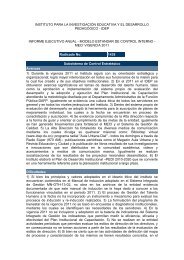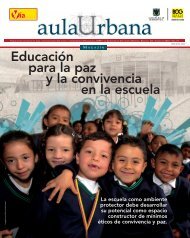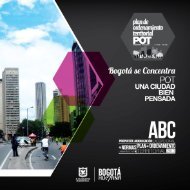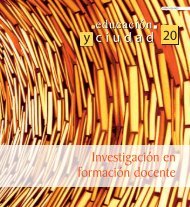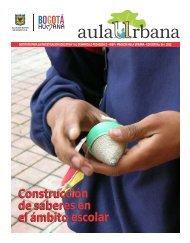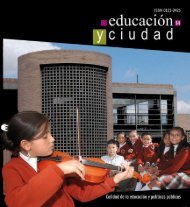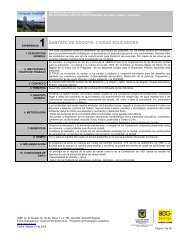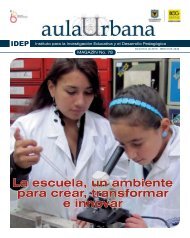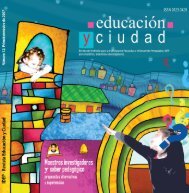Convivencia ciudadana - IDEP
Convivencia ciudadana - IDEP
Convivencia ciudadana - IDEP
Create successful ePaper yourself
Turn your PDF publications into a flip-book with our unique Google optimized e-Paper software.
Resumen El presente artículo resume parte de la investigación realizada para el <strong>IDEP</strong> con el objetivo de<br />
mostrar la relación que une a los derechos colectivos, entre los cuales el espacio público integra<br />
otros como el patrimonio cultural, medio ambiente y ética pública, con la “pedagogía <strong>ciudadana</strong>”<br />
y con la formación de los niños y adolescentes en edad escolar. Se resalta la importancia de la<br />
comprensión integral del concepto de espacio público, que involucra no solamente su función de<br />
configurador de la ciudad sino también la de fusión sociocultural, ambiental, histórica y simbólica.<br />
Dentro de él se ven claramente tres componentes: el espacial y funcional, que habla de su<br />
estructura y composición; los valores patrimoniales tangibles e intangibles, y los valores éticos<br />
—de comportamiento adecuado con el lugar y con los otros—. El propósito es el de enseñarle<br />
a los niños estos temas, con su grado de complejidad según su escolaridad, mediante actividades<br />
lúdicas en espacios públicos, conociendo sitios, dibujando, realizando ejercicios sobre propuestas<br />
hechas por ellos, de manera que los concientice sobre valores éticos más complejos; estos ejemplos<br />
se ven en varios lugares del mundo, una nueva forma de enseñar a través del juego, la pintura, la<br />
literatura, el juego de actuaciones.<br />
Palabras claves: espacio público, patrimonio, medio ambiente, ética, pedagogía<br />
<strong>ciudadana</strong>, formación de los niños en edad escolar.<br />
Abstract This article summarizes part of the investigation realized for the <strong>IDEP</strong> with the objective to show<br />
the relation between the collective rights, in which the public space integrate others like the cultural<br />
patrimony, environment and public ethics, with the “citizen pedagogy” and with the education<br />
of boys, girls and adolescents in scholar period. The importance of integrally understanding the<br />
concept of public space is emphasized and shows that it involves not only its function of builder<br />
of the city but also as a cultural, environmental, historical and symbolic function.<br />
Three components settle down clearly: first of all, the space and functionality which speaks of the<br />
structure and composition of the public space, the tangible and intangible patrimonial values, the<br />
ethical values, and the adequate behavior with it surrounds and to others. The purpose is to teach<br />
the children these subjects with the level of complexity according to its schooling; through playful<br />
activities in public spaces, discovering new places, drawing, realizing exercises towards new ideas<br />
and until it gives them a conscience of better ethical values. These examples are seen in several<br />
places in the world as a new way of teaching through games, painting, literature, and role plays.<br />
Key words: public space, patrimony, environment, ethics, citizen pedagogy, formation of<br />
scholars boys and girls.





